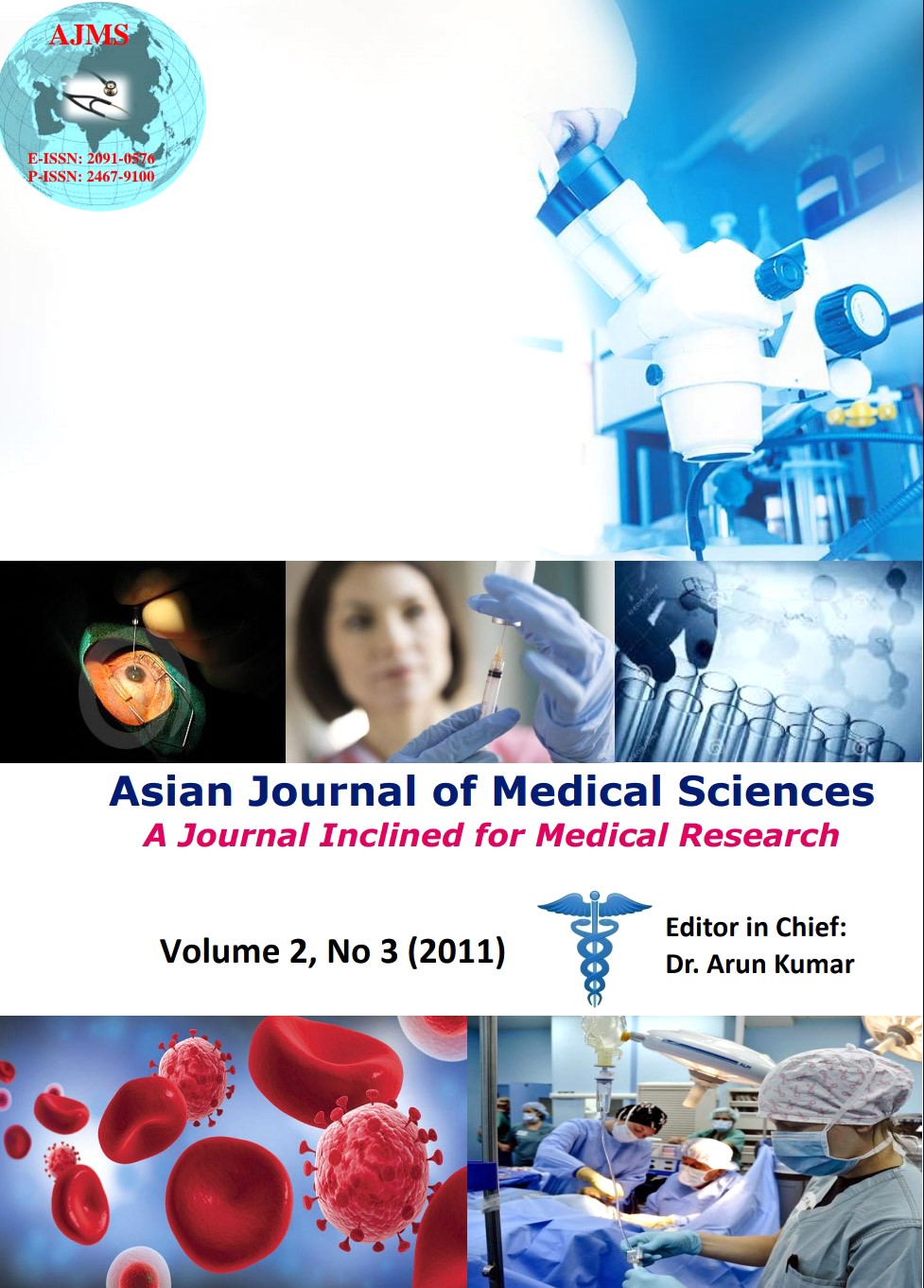A Community Based Epidemiological Study on Intestinal Amoebiasis in Rural West Bengal, India
Keywords:
E. histolytica/E. dispar, epidemiology, socio demographic factors, amoebiasis, gastrointestinal diseaseAbstract
Objective: To assess the magnitude of Entamoeba histolytica/ Entamoeba dispar infestation and to study some socio-demographic correlates in relation to parasitic infestation in the study subjects.
Material & Methods: A cross sectional epidemiological study was carried out in West Bengal, India among rural population of two districts. Stool samples from selected study subjects of all age groups were tested for presence of parasitic infestation by standard diagnostic procedures and data were collected to get information on socio demographic correlates of E. histolytica /E. dispar infestation.
Results: Total 402 stool samples were tested. 23.4% of stool samples were positive for parasitic infestation. Major types were E. histolytica/E. dispar (17.7%), G. lambia (3.23%), B. hominis (2.23%), A. lumbricoidis (0.99%) and Hookworm (0.76%). Six samples were positive for mixed infection (1.49%). Among those infected with E. histolytica/E. dispar, majority were female (63.4%), middle aged 21-60yrs (53.5%). Magnitude was highest among geriatric people (26.7%) and children aged 6-10yrs (22.7%) and least among <5yrs age (9.1%). Majority of the infested persons were asymptomatic (52.1%). Participant’s self perception, self medication & water used for washing utensils were found to be significantly associated with parasitic infestation.
Conclusion: Result reiterates the need for organized efforts for improvement of basic sanitation needs in the area to curb the parasitic morbidities.
DOI: http://dx.doi.org/10.3126/ajms.v2i3.4375
Asian Journal of Medical Sciences 2 (2011) 164-168
Downloads
Downloads
Additional Files
Published
How to Cite
Issue
Section
License
Authors who publish with this journal agree to the following terms:
- The journal holds copyright and publishes the work under a Creative Commons CC-BY-NC license that permits use, distribution and reprduction in any medium, provided the original work is properly cited and is not used for commercial purposes. The journal should be recognised as the original publisher of this work.
- Authors are able to enter into separate, additional contractual arrangements for the non-exclusive distribution of the journal's published version of the work (e.g., post it to an institutional repository or publish it in a book), with an acknowledgement of its initial publication in this journal.
- Authors are permitted and encouraged to post their work online (e.g., in institutional repositories or on their website) prior to and during the submission process, as it can lead to productive exchanges, as well as earlier and greater citation of published work (See The Effect of Open Access).




